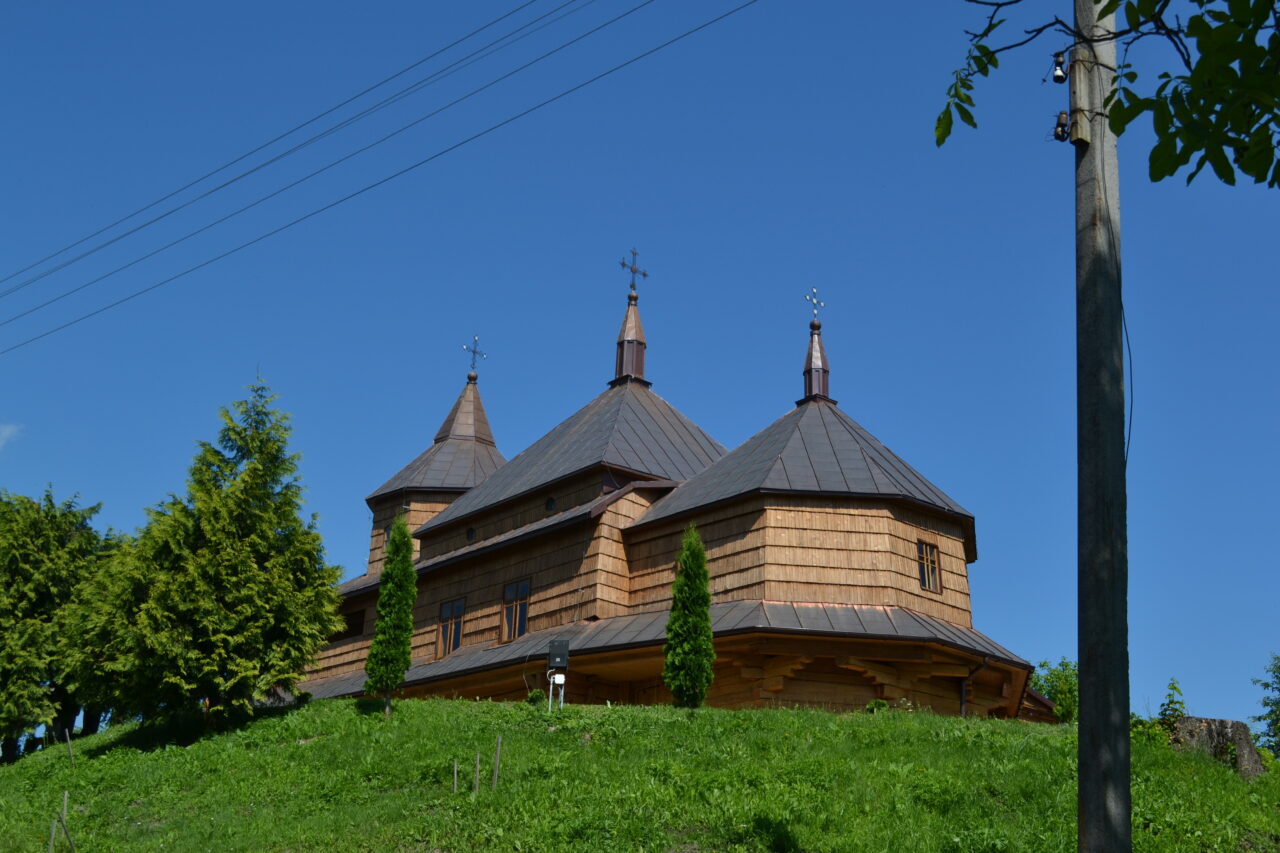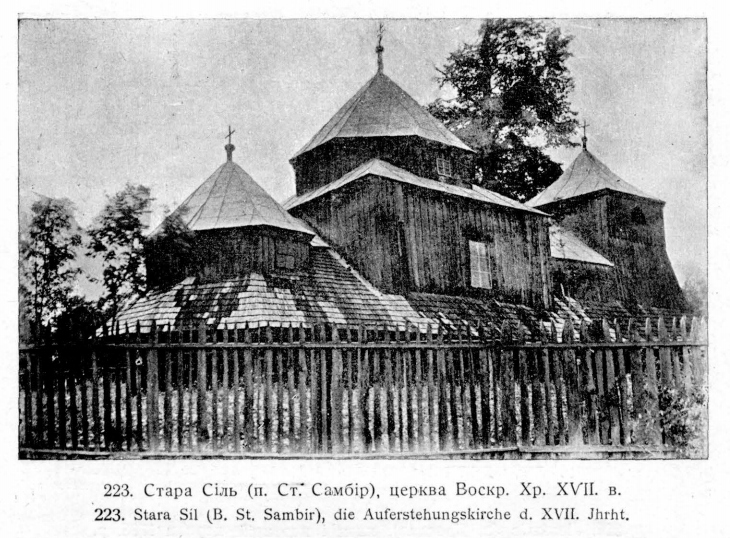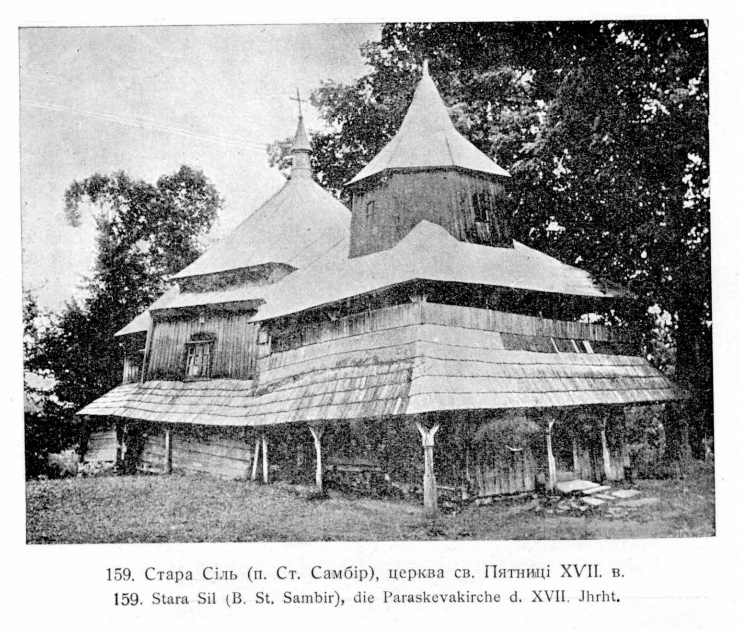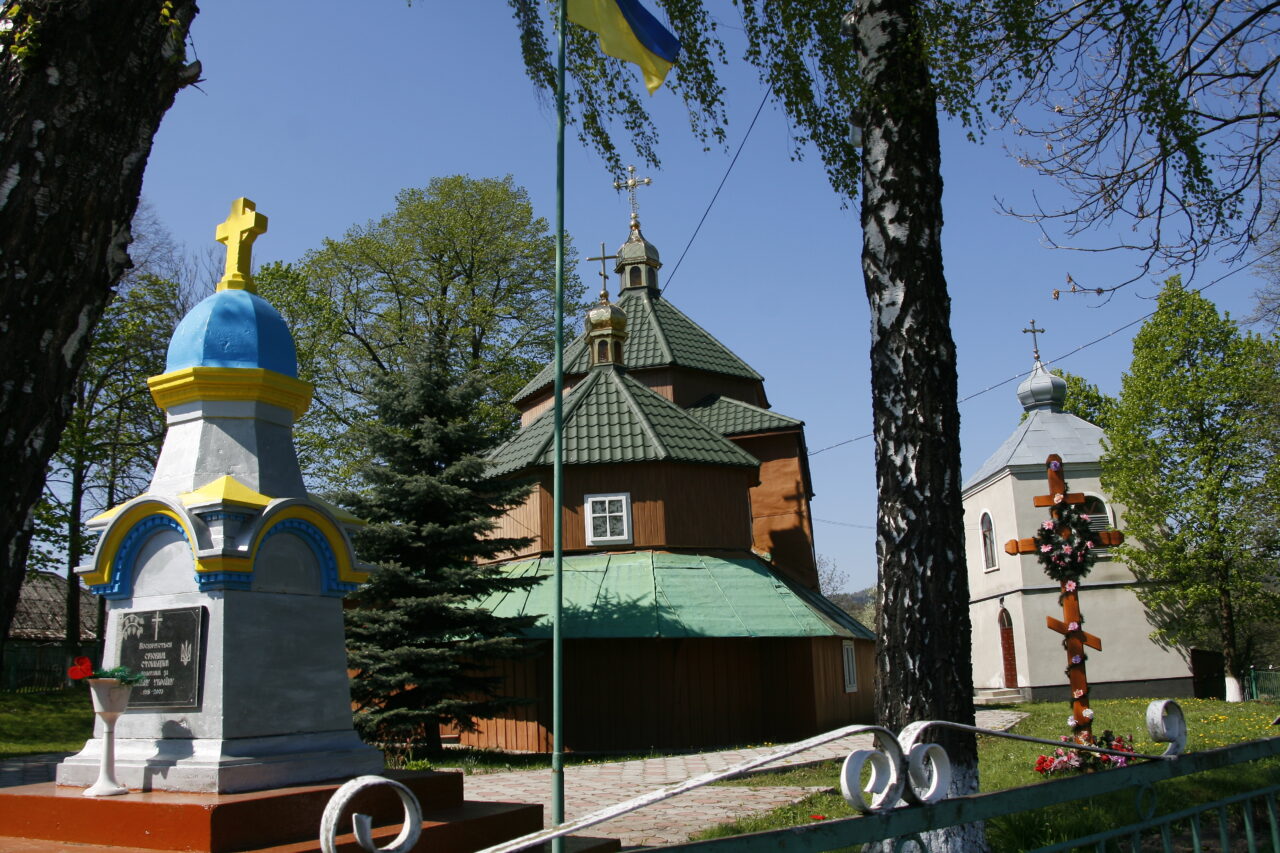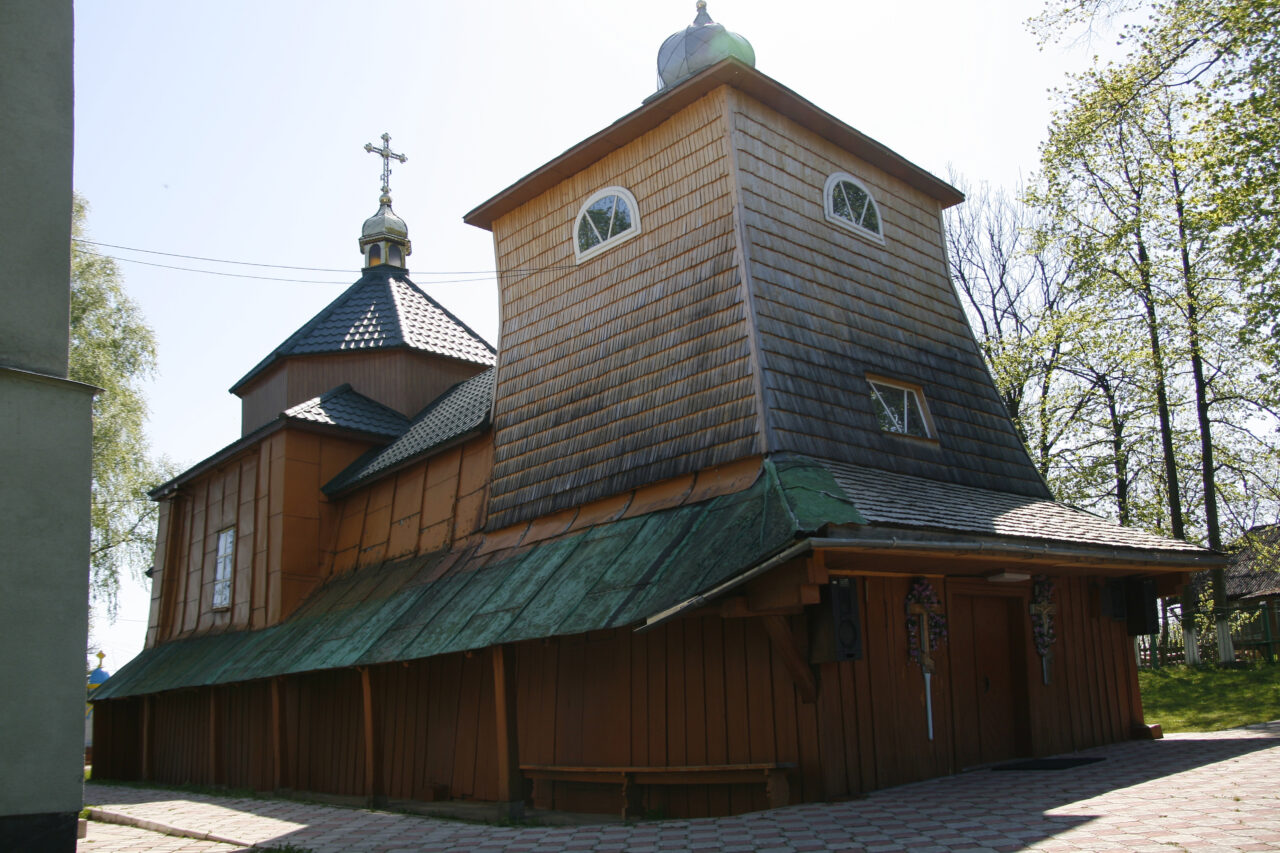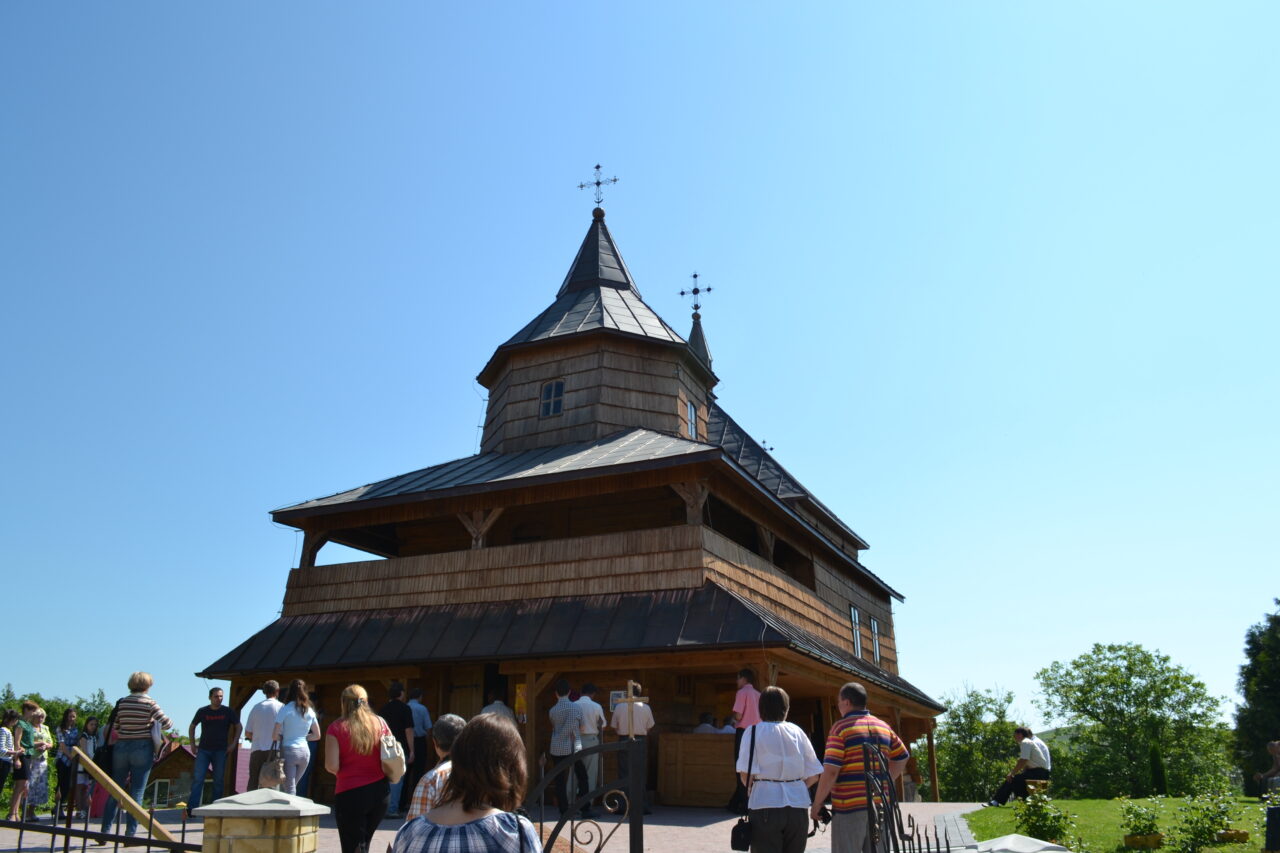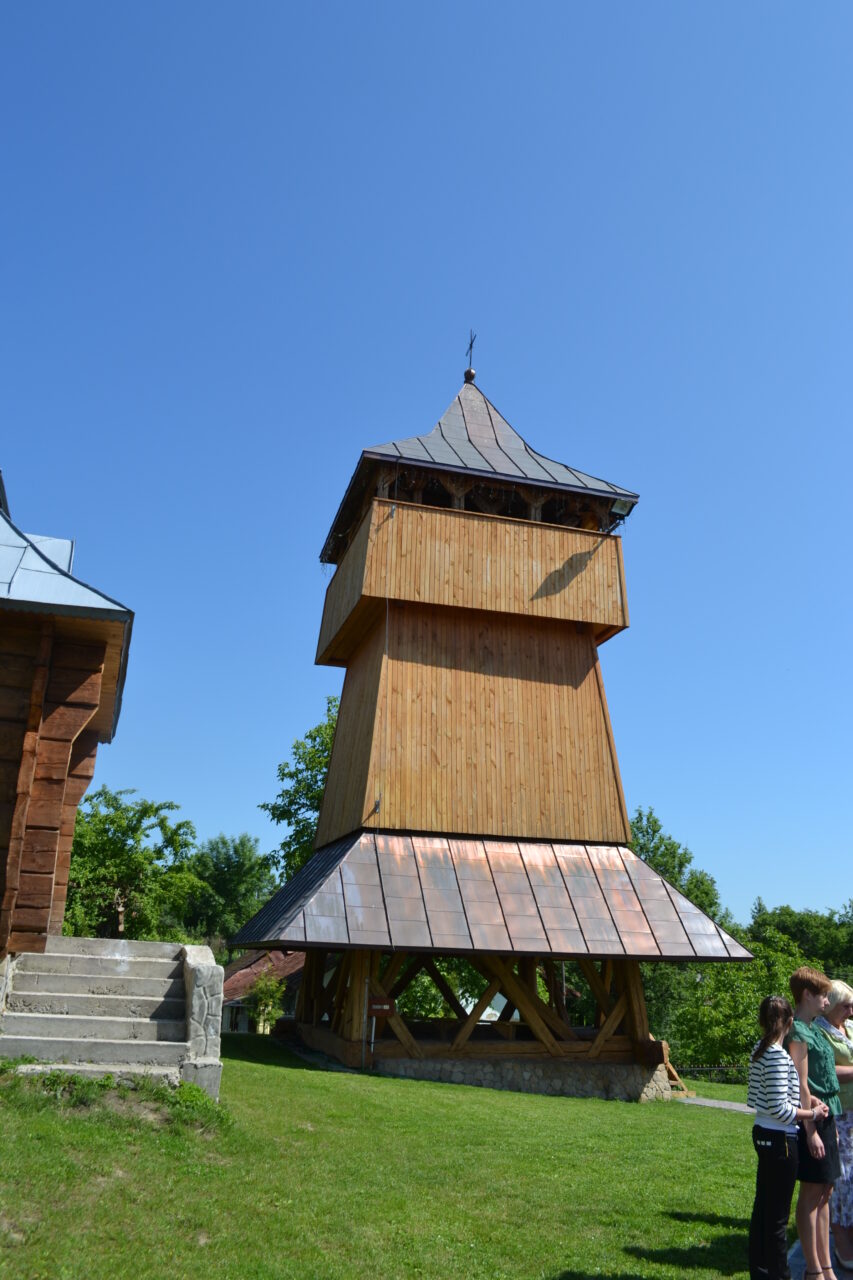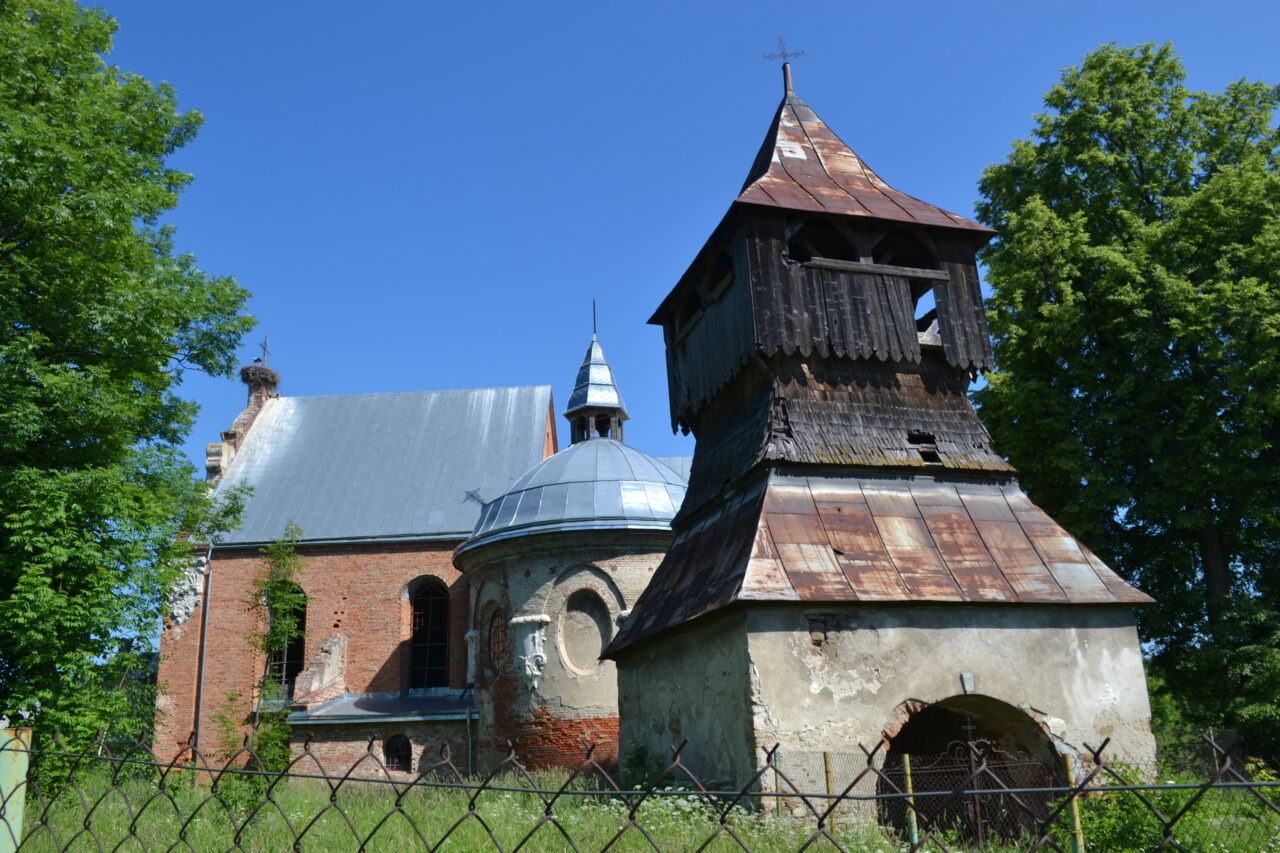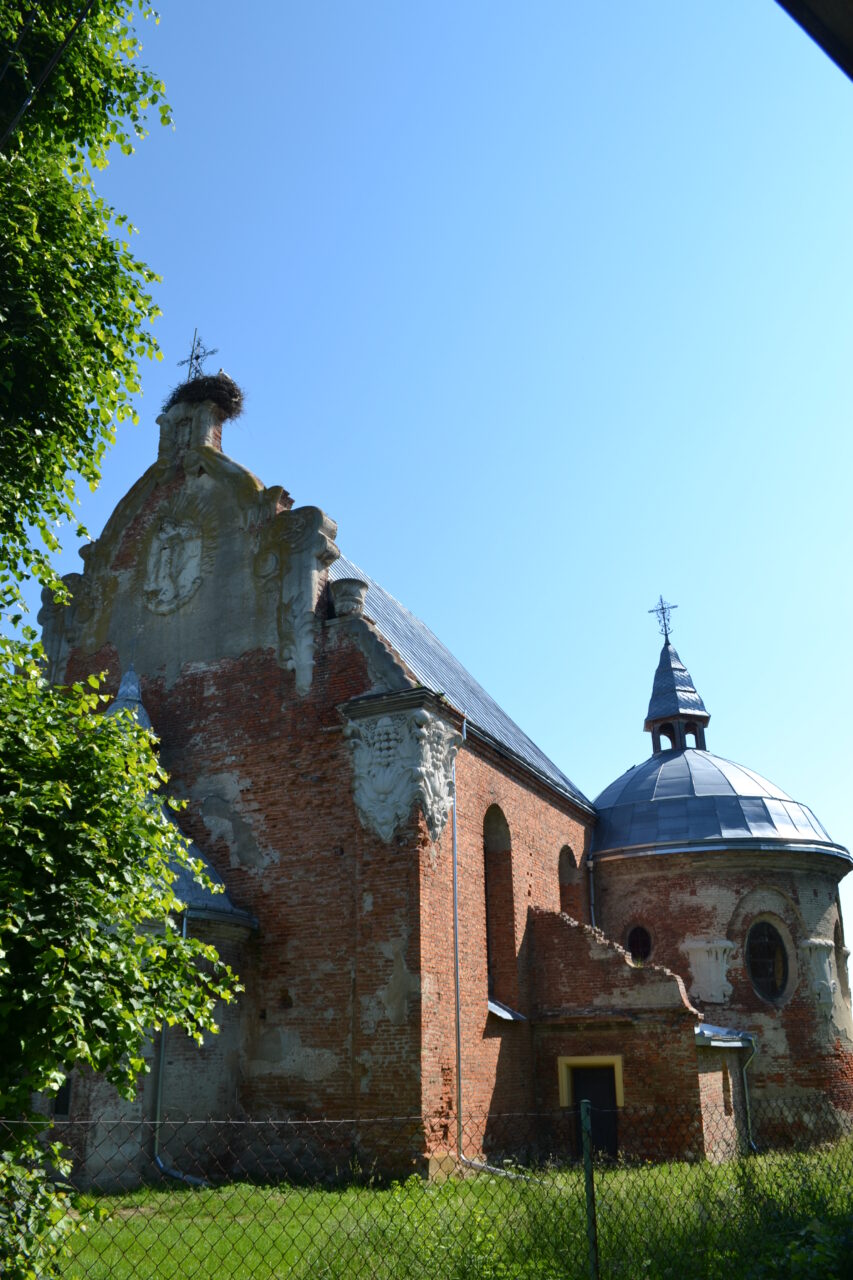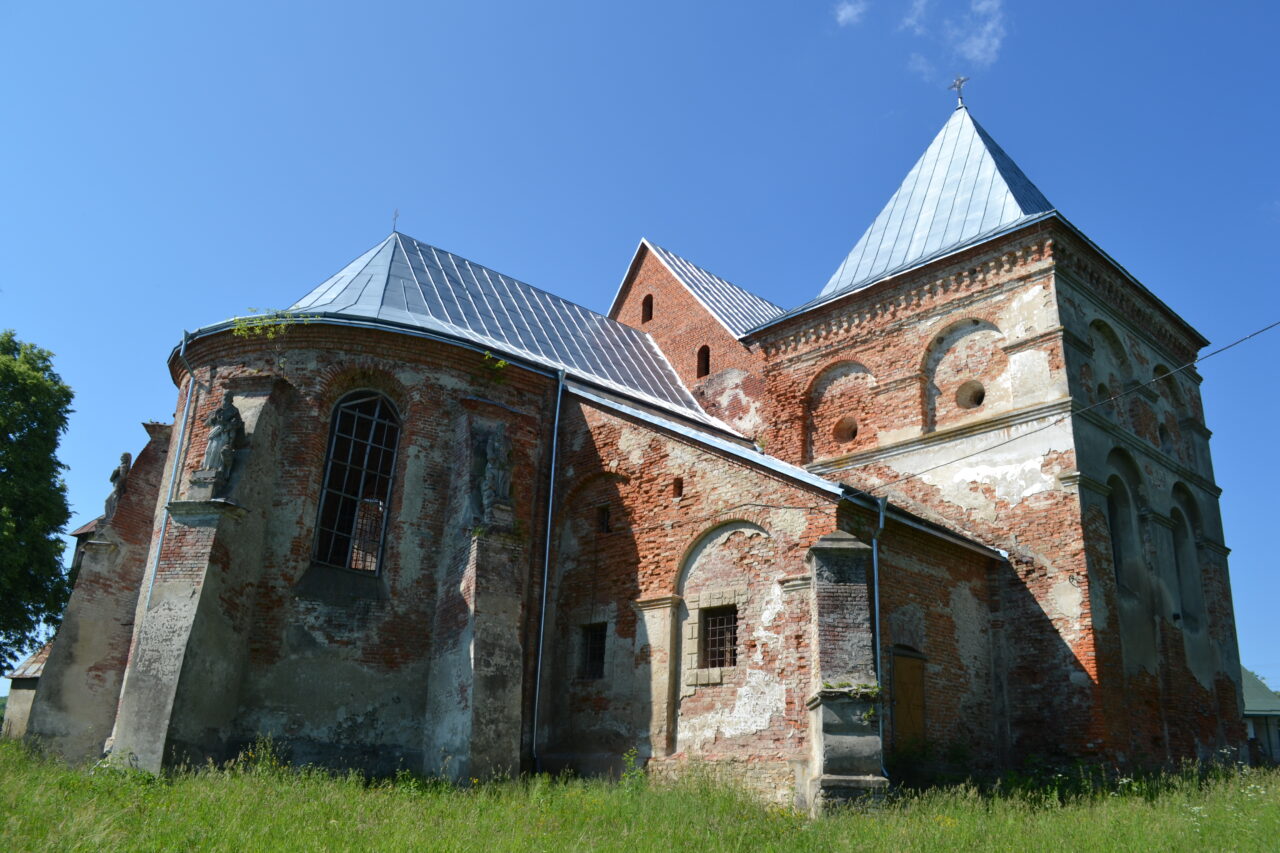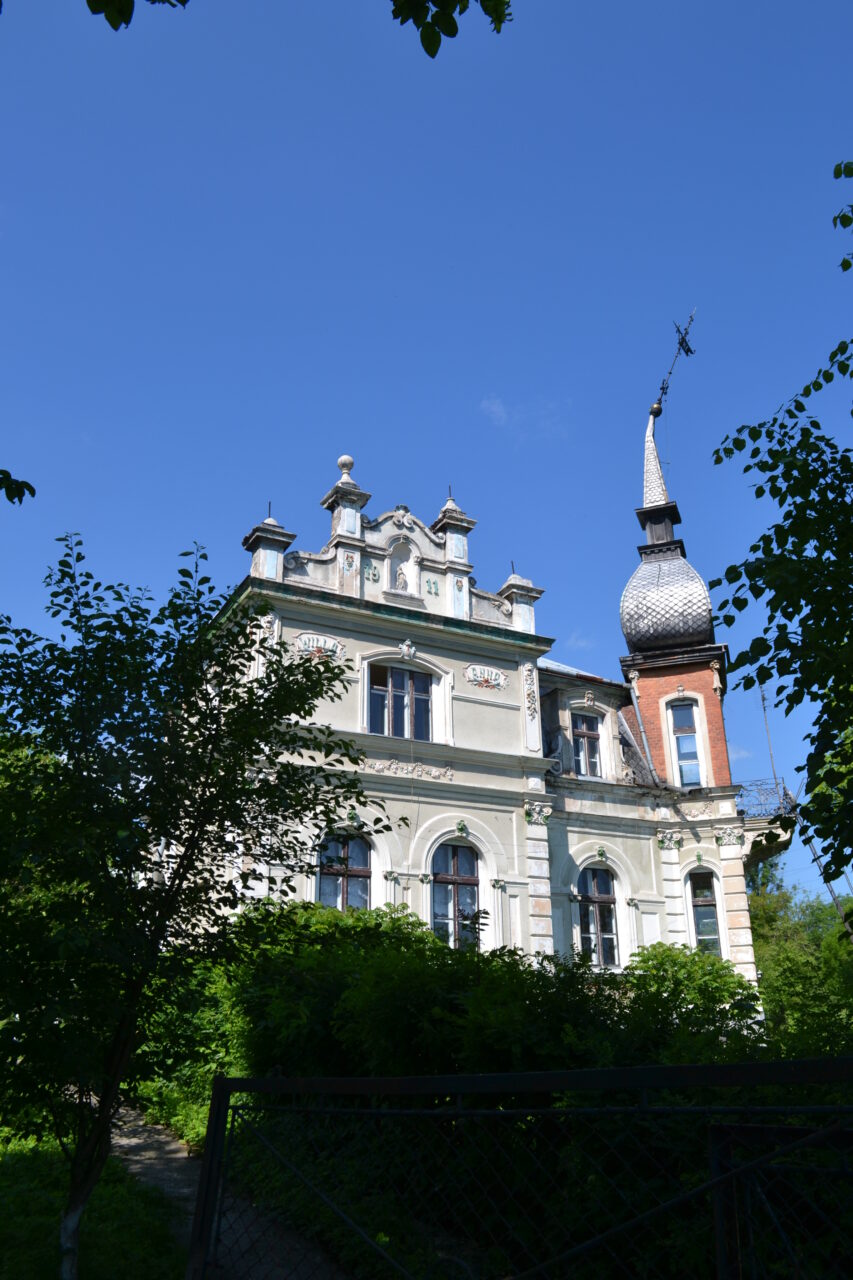Stara Sil is one of the major tourist attractions in Staryi Sambir district and astonishes its visitors. Tourists come to this village surrounded by the lower Carpathian Mountains as they wish to see the monumental ruins of the Church of St. Michael the Archangel and sophisticated Villa Anna with a “weary” spire on its tower. They rarely go as far as to the wooden churches, however, both are worth seeing: the Host Resurrection Church (17th cent.), a newer one, situated on the road from Stara Sil to Khyriv, and the Church of St. Paraskeva of Iconium, the patriarch of the village, situated in the Higher suburb near the Villa Anna.
In spite of being a patriarch, the church neither gives a hint of abandonment nor the atmosphere of old age. The neat church yard is surrounded with an iron fence. The fence serves as a kind of barrier that protects the sacred building from the profane world. It immediately creates distance: if you enter – be respective and obedient, this is where faith resides.
The Church of St. Paraskeva of Iconium is almost 600 years old. The church was allegedly built as a monastery temple during the rule of Prince Lev Danylovych in 1440. Then Stara Sil was merely called Sil and considered a town. Such age is incredible in the context of the Ukrainian wooden architectural monuments. It is the reason why few historians share the optimism of regional ethnographers who believe in local stories. It is not possible to prove who is right – those who think 1440 is the year of the establishment or those who similarly to Mykhailo Drahan, a historian and expert in wooden architecture, reckon that it was built in the 17th century. There existed a privilege dated 1543 from Sigismund I the Old, King of Poland, which provided several plots of land to St. Paraskeva Church and made it a parish church. But it is a mystery whether it was about this church or its precursor. The Church of St. Paraskeva of Iconium is also mentioned in the tax register book of the town in 1589. Nevertheless, the first authentic description of the building was included in documents in 1833. It was the period of the church’s refurbishment: it was raised on a stone foundation, old wood shingles were replaced and a sacristy was added.
Nowadays it does not look its age – 380 years. Of course, the community takes the best care of the church. In practice, it means a new door and tinplate on the roof and the porch, modern pavement on the path leading to the church entrance, and plasterboard on the interior walls. Unfortunately, this is the reality of our culture: the heritage protection institutions do not have enough finances for a professional restoration of ancient buildings, and those who serve at the church are not intelligent and educated enough to understand why a 15th-century church should not be visually modernized.
According to the Galician architectural tradition the church is three-nave and three-domed. A faceted pentagon of the altar is adjacent to the square and the highest part of the nave. A rectangular gynecium is on the western side in accordance with all the canons. There is a dome with a cornice above the nave. The church is covered with hipped tent-like dome, and a small elongated octahedral cupola on the octagon above it. It looks pretty modest. But in the 15th century, when Europe was fed up with monumental and majestic gothic cathedrals and started to rethink the heritage of Antiquity during the Renaissance, small and humble buildings were usually built in our territories. During that period, the history of Western Ukraine was very tumultuous, as the land suffered from nomadic raids from the East who often came in search of slaves and loot.
There is an elegant arcade gallery-empora for a choir above the gynecium. It dates back to the 18th century. Another octagonal tent-like roof rests on top of it.
There is a bell tower of the 17th century near the Church of St. Paraskeva of Iconium. It is a square framed construction, made of wood and three tiers. The roof is hipped with cornices. The first tier is a marvelous interlacing of large planks, an open traceried arcade. The walls of the second tier visually lean to the inside. Another open arcade is on the third tier, where the bells are.
Since 1600 there were fraternities that worked in both churches of the village. St. Nickolas side altar was installed in the temple in the 18th century. The church has never been closed: liturgies were held even during the USSR regime.
In the 20th century the church was repaired in 1915, 1950 and 1980. During those repairs, natural wood shingles were gradually replaced with tinplate, a foreign material for wooden buildings.

